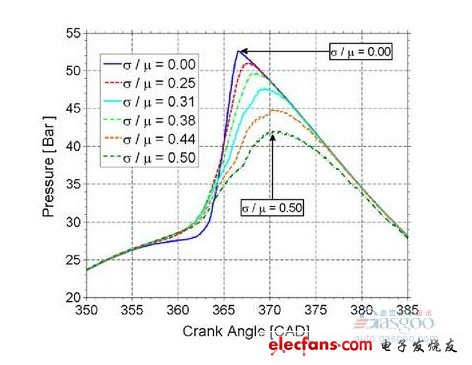According to reports from the University of New South Wales in Australia and the Sandia National Laboratory in the United States, ethanol fuel stratification technology can significantly reduce the compression rate of HCCI engines and increase the high load limit of engines.
In the simulation experiment, the experimental team used a multi-space model combined with the factors of nitrogen oxide emissions to evaluate the effect of ethanol fuel stratification technology to reduce the HCCI engine boost rate.
The working principle of HCCI engine is similar to spark ignition diesel engine. Like diesel engines, throttle losses and high compression ratios produce extremely high thermal efficiencies. The fuel mixture is pre-mixed to form a homogeneous mixture, which is diluted in the cylinder. Combining these factors, in addition to soot during combustion, there are very few harmful gases of nitrogen oxides.
Although the HCCI engine has many benefits, it still has to overcome several obstacles in practice. The first is that the high compression rate at high load causes the engine to knock, which will damage the engine block. Secondly, unlike spark-ignition engines, which are limited to flame propagation speeds, and diesel engines, which are limited to mixed injection speeds, small oil droplets in the cylinders of HCCI engines are burning almost simultaneously. Fuel stratified injection technology may solve this problem.
The stratified charge compression ignition can achieve stratified fuel injection, including homogeneous compression ignition ignition and two-stage ignition to control the fuel concentration at any time to reduce the compression rate.
When the fuel is directly injected into the combustion chamber, partial temperature reduction is achieved by stratified fuel injection. Since single-stage ignition is very sensitive to temperature, if the temperature of the fuel mixer is high enough, the compression rate can be reduced.
There is a check-and-balance relationship between the emissions of soot and nitrogen oxides. When the emission of oxides is reduced, the temperature is lowered, the soot is not completely oxidized, and the emissions increase.

Ethanol is by far the best HCCI engine fuel. Because of the high boiling point of water, they also considered a mixed fuel of water and ethanol.
They established a multi-space model and confirmed the natural stratification data of the HCCI engine, then extended the scope to the fuel stratification model, and calculated the fuel stratification evaporation in the simulation model. This leads to increased fuel stratification in the cylinder. research shows:
The model can accurately predict the ignition timing of ethanol; it can also predict the compression rate of thermal stratification. When the compression ratio is high, it will not cause delamination, and increasing the delamination degree will cause the engine to stall.
· Long-term combustion, combined with different amounts of evaporative cooling, exacerbates stratification. The intensified delamination phenomenon led to the continued burning.
• Unlike two-stage ignition, lean ethanol mixed ignition emits very little nitrogen oxide.
The disadvantage of the fuel stratification technology is that a large amount of nitrogen oxides are generated when the local temperature is high, and at the same time the combustion efficiency is reduced when the temperature is too low. The mixed fuel after adding water can reduce the emission of nitrogen oxides and reduce the compression rate. This will be a higher level of layering technology.
Angle Adjustable Inground Light
SHENGYA LIGHTING TECHNOLOGY CO., LTD. , https://www.syalighting.com
